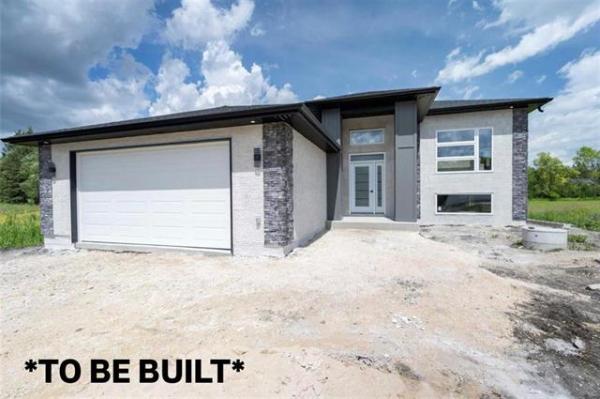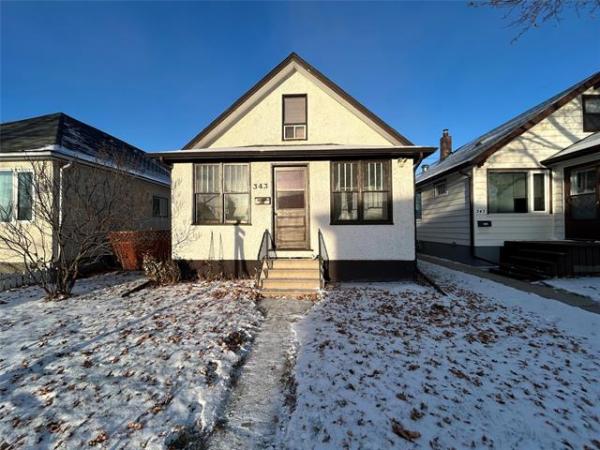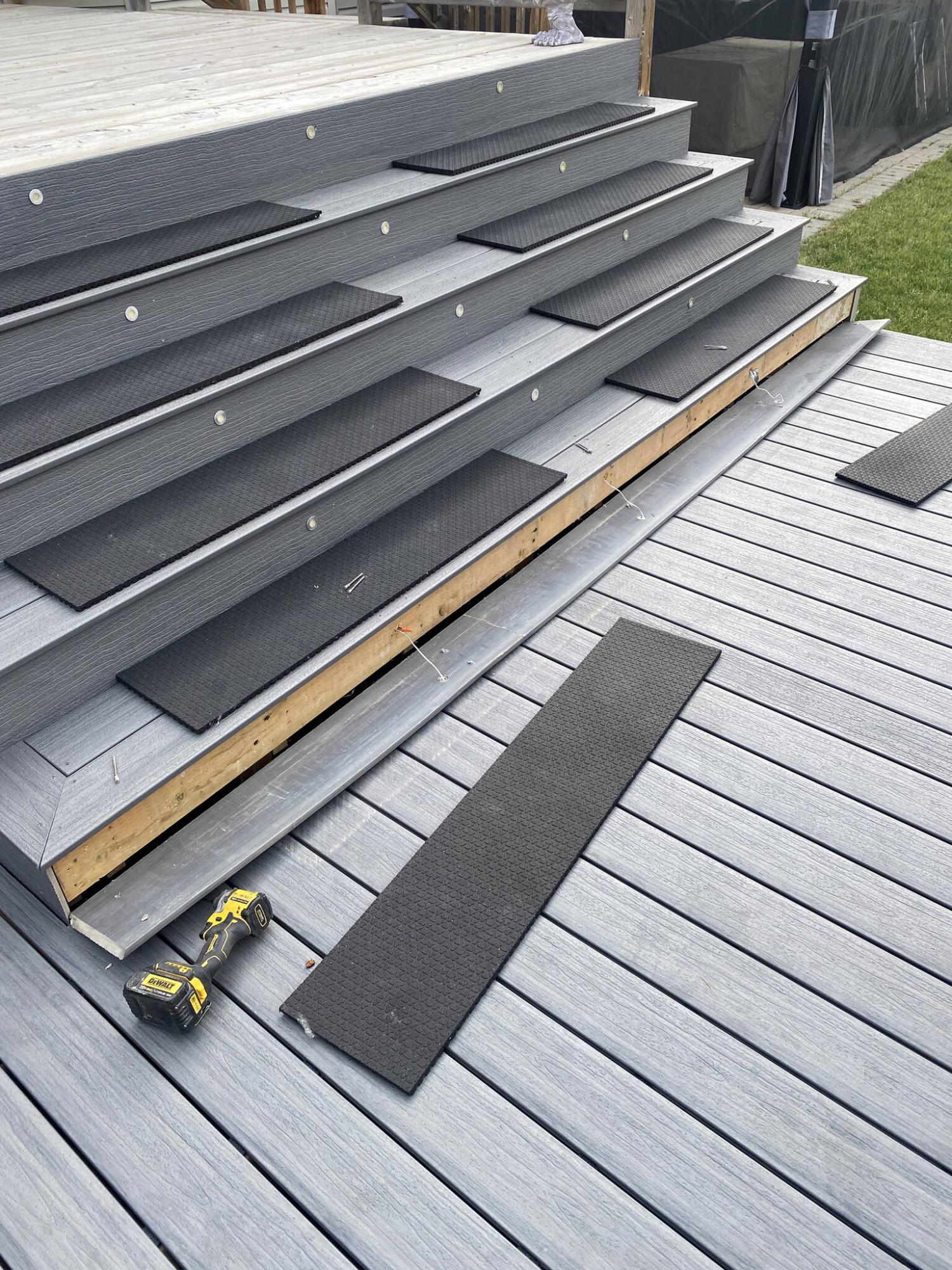
Marc LaBossiere photos / Free Press
The fascia board was fully removed and cut down to allow the top decking boards to move freely below it.

Once the fix was made, you could never tell there had been an issue.
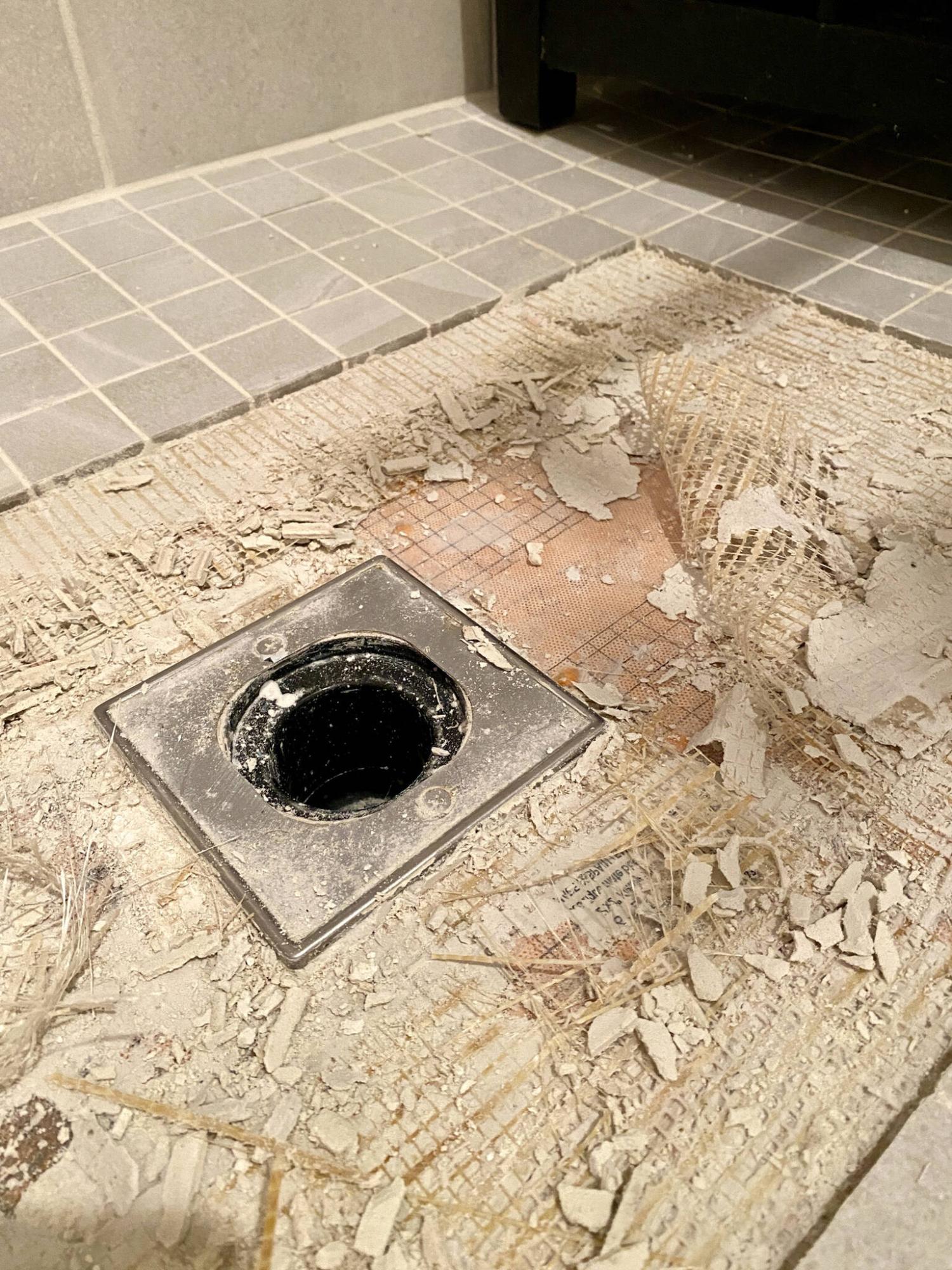
After a few shower tiles revealed cracked grout, further assessment revealed thinset that had never fully cured.
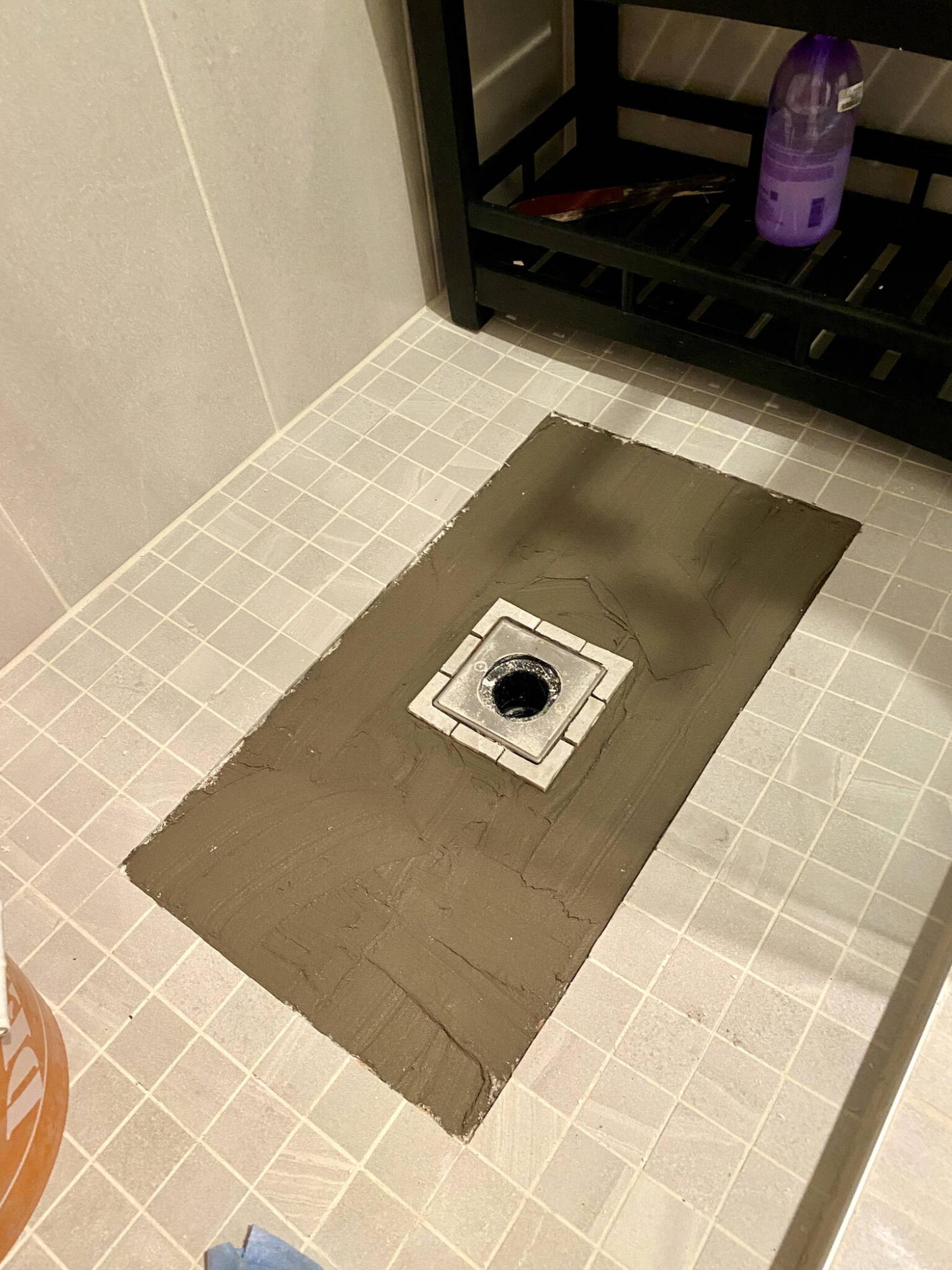
Once the tiles were temporarily removed and the area cleaned, new high-bond, quick-setting thinset was used to re-position the tiles.
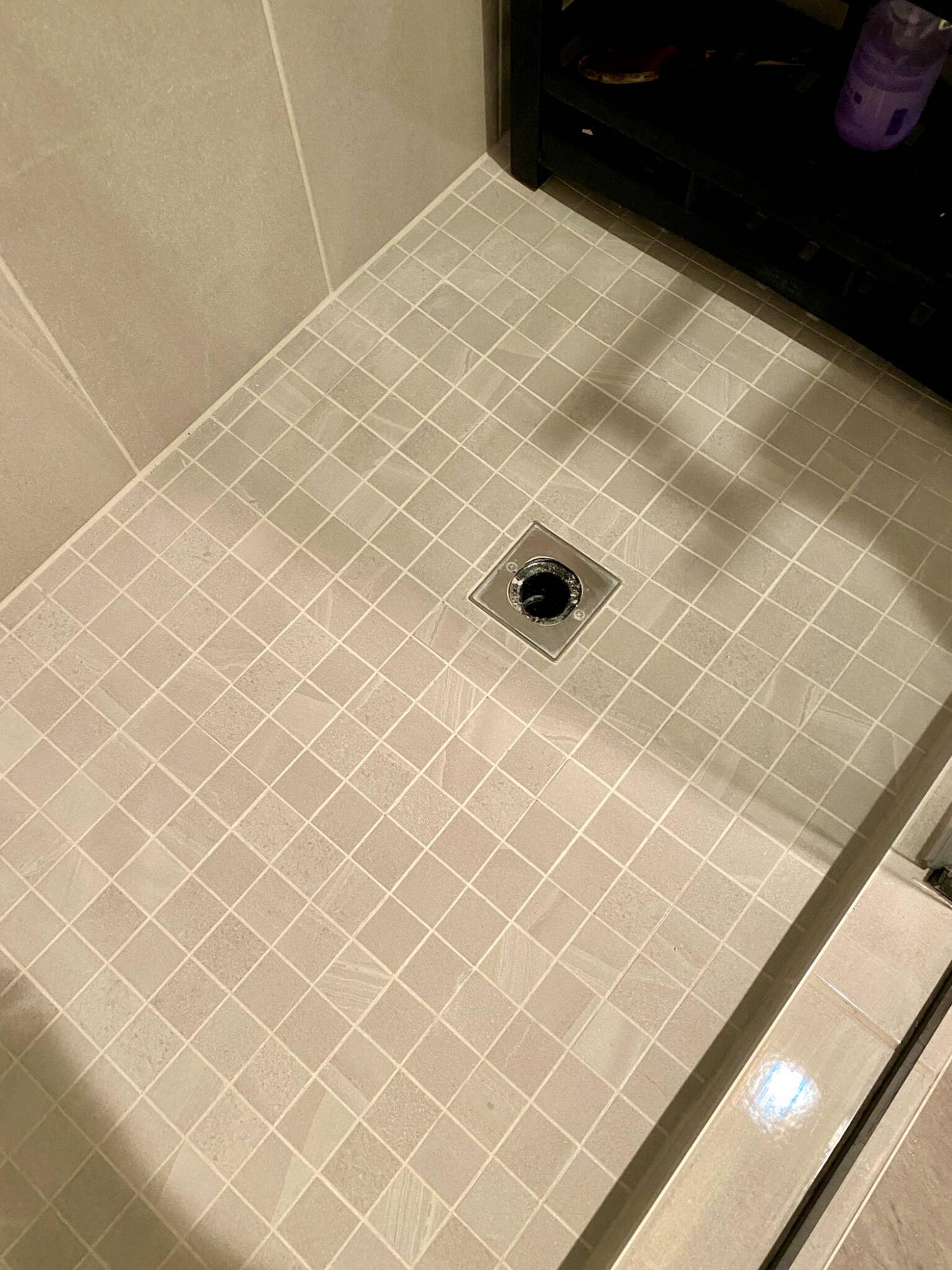
The shower base now looks as good as it did during the initial installation.
I always aspire to achieve the best results for my clients under any circumstance. Whether it’s an interior or exterior project, each has its own set of variables that can wreak havoc.
But circumstances that cause issues can always be remedied, even when the outlook may seem grim. Two such scenarios presented themselves this spring — one outside and one inside. Fortunately, the fixes were quick and manageable once the proper approach was established.
Two summers ago, a huge lower-tier deck was added to an existing higher tier, primarily to surround a new above-ground pool. While the higher-tier deck was topped with old treated lumber, the homeowner wanted to sheathe the lower tier in a light-grey composite decking board, along with matching fascia for the stair risers and perimeter. The long-term plan is to reface the upper tier to match.
After the first winter, the homeowner enhanced their yard even more by placing patio blocks that lead to a firepit and seating area along the far corner of the new perimeter fence. The entire yard has become an oasis — truly a sight to behold.
After this past winter, though, the homeowner contacted me in a mild panic. A fascia board along the lowest stair leading up from the new lower- tier deck had been forced away from the back framing. After having had a series of stair lights installed, my client didn’t know how to remedy this issue, and didn’t really understand why it had occurred, having gone through the first winter without any trouble.
Unlike treated lumber that is fastened to back-framing of the same material, composite boards — although fastened to treated framing as well — experience slight variations in expansion and contraction during temperature extremes. As such, the two mediums will ever-so-slightly shift at different rates that may cause visible changes to deck surfaces.
In this instance, the composite decking used on the stairs overlaps the stair riser fascia. The lowest stair fascia was installed before the lower- tier decking was installed. For whatever reason, this past winter caused the top decking boards (held on by clips) to heave the fascia board along the bottom edge, causing the top of the fascia to dislodge from the framing.
The fix was simple: remove the fasteners from the fascia board and flip it upside-down (as to not affect the wiring of the stair lights), and trim back the fascia height so that once the fascia board is secured again, the top decking boards can move freely below the bottom edge of the fascia board. The process took less than 10 minutes and ensured the issue will never repeat itself.
One interior issue I had to tackle involved mosaic tile in a shower floor that had not properly set, causing slight motion that eventually made the grout crack and break free. Upon further inspection, it became clear the thinset used to stick the tile to the waterproof cloth had never fully cured — the removal of a few test tiles showed it was still soft in places. This was unanticipated; the thinset in question came highly recommended and has never caused an issue in the past. At any rate, whether it was a bad batch or simply bad luck, the section of tile nearest the drain was clearly in need of repair.
The fix in this scenario was also quite straightforward: a rectangular section of tiles was removed, along with the soft thinset, down to the waterproof cloth. Once the area was cleared of tile, and the cloth scrubbed free of any remaining thinset, the area was prepped with another high-grade, quick-setting thinset. The mosaic tiles were then repositioned in sections, including the custom cut individual tiles that surround the chrome drain. Once the tiles were fully set, the entire area was re-grouted using the same resin-based grout that had been applied during the initial installation. Within a few hours, the shower base looked as good as new.
As a builder and renovator, the goal is always the same — to complete projects in a timely manner that meets or surpasses homeowners’ expectations.
And if there are twists and turns along the way, there’s always a satisfactory solution, no matter what the cause.
For me, solving problems is always both a satisfying and humbling experience.

